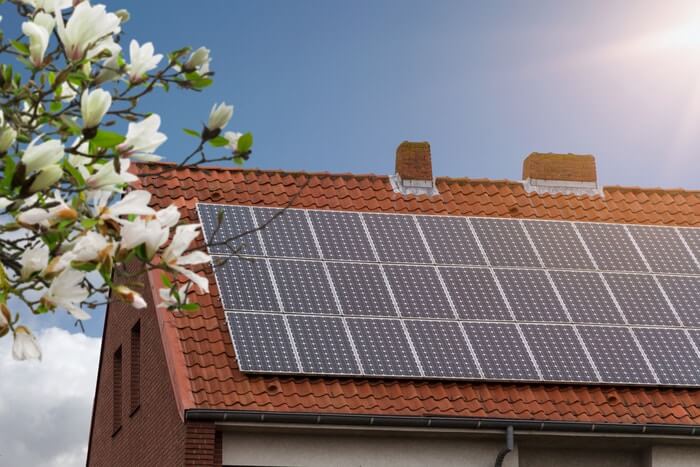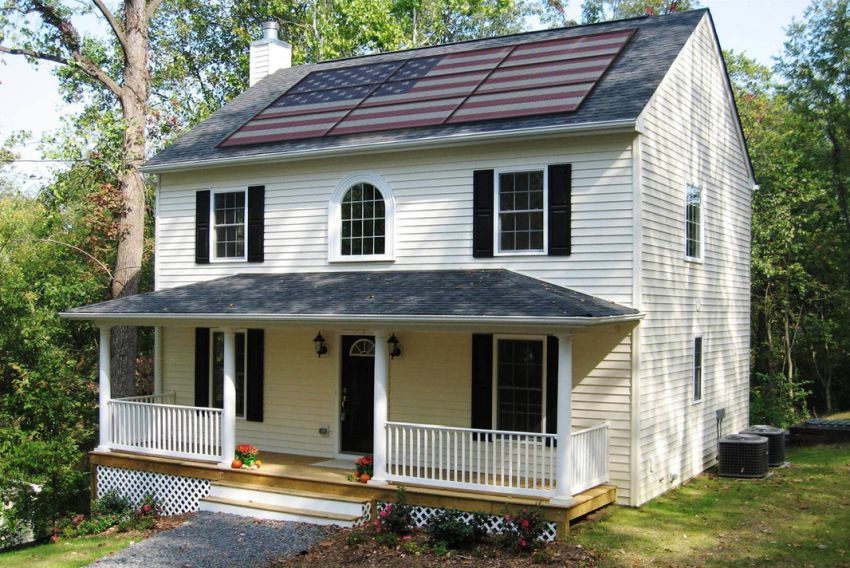Are you doing a solar project?
Modernize can pair you with three to four pros in your area, so you can compare options and save time and money.
Until the last decade, using solar energy to power a home’s electric components felt like a far-fetched pipe dream reserved for only the most elite. But in recent years, prices have dropped and solar panel installations have become widely accessible, even normalized. Wondering which are the top states for solar? We dug deep to find out.
According to the Office of Solar Energy Efficiency and Renewable Energy, the price of solar PV panels has dropped nearly 70 percent since 2014. A recent article from the U.S. Energy Information Administration said that the amount of gigawatts of solar power in the country has soared more than 200 percent in the last 14 years.
In fact, the Solar Energy Industries Association reported that 46 percent of all new electricity-generating capacity added in the United States in 2021 were from solar energy. That marked the third year in a row that solar made up the largest share of new capacity, the agency said.
So how do the country’s 50 states rank when it comes to what areas are the best for solar energy? We’ve done the research so you don’t have to. Here’s what you need to know.

Which States Have the Highest Solar Capacity?
Solar power is used in different capacities by homeowners across all 50 states, but some inevitably do better than others. According to a report released by the Solar Energy Industries Association (SEIA) in January and based on annual data collected throughout 2021, these are the top states for cumulative solar electric capacity installed.
- California (34,950 megawatts)
- Texas (13,845 megawatts)
- Florida (8,206 megawatts)
- North Carolina (7,811 megawatts)
- Arizona (5,644 megawatts)
- Nevada (4,511 megawatts)
- Georgia (4,268 megawatts)
- New Jersey (3,854 megawatts)
- Virginia (3,761 megawatts)
- Massachusetts (3,607 megawatts)
Like last year, California remains leaps and bounds ahead of the other nine states in terms of solar power. The state is able to power more than 10 million homes using solar power, compared to Texas, which is in second place and can power about 1.7 million homes. The Golden State was an early adopter of the technology and jobs generated by the industry.
The Top States for Solar Installations
Another way to understand how states are embracing solar power is to take stock of the number of installations taking place in each state. Data collected throughout 2021 by SEIA shows that Texas, California, and Florida were among the top contenders — similar to the states’ rankings in solar capacity. But other states that are supporting the solar power industry may surprise you. These are the top 10 states for solar installations:
- Texas
- California
- Florida
- Virginia
- Georgia
- Indiana
- North Carolina
- New York
- Nevada
- Illinois
Many of these states have accelerated their relationships with solar power over the years. For example, in 2020, Indiana ranked at number 32 in the country for solar power installations, but today it sits at number 6. In 2019, Virginia, which now sits in fourth place, ranked 19th.
This disproves the common notion that solar power is only accessible or popular in states flooding with sunshine. In fact, solar panels really only need about four hours of direct sunlight every day — and any excess energy collected is reserved for cloudy days. For homeowners who live on the grid, they’ll never go without electricity. They can even make money in some cases with the help of net metering.
Find the Right Contractor for Your Solar Project
Whether you’re ready to begin your project now or need some expert advice, our network of contractors are here to help. With a few simple questions, we’ll find the best local professionals for you
Solar Rebates and Other Financial Incentives
Major factors in supporting solar power growth are the available rebates, grants, discounts, and incentives homeowners can receive by installing solar technology, including panels, in their homes.
The Database of State Incentives for Renewable Energy collects information on the incentives available in each state and, when applicable, within regions, counties, and local municipalities. This information is mutually beneficial — the easier and more accessible solar energy is, the more likely people are to invest in the field.
On the federal level, the U.S. government offers the Federal Residential Renewable Energy Tax Credit, which is a 30 percent of the price when you install:
- Solar PV panels or cells
- Contractor labor costs for installation
- Permitting and inspection
- System equipment, like wiring and solar inverter installations
- Sales tax on eligible expenses
The tax credit for 30 percent pertains to systems installed between 2022 through 2032. For that reason, anyone considering solar power may want to do it sooner rather than later to take advantage of this incentive. But the homework doesn’t all need to be on your shoulders. A skilled contractor should be aware of the range of incentives available federally and locally.
Leasing Solar Panels
There is also the option to lease a solar panel system, which can mean major savings on the up-front costs of purchasing and installation.
However, homeowners who lease are not eligible for rebates, discounts, and other incentives that are offered since they don’t actually own the system.
Instead, they pay a monthly leasing fee and can enjoy the benefits of solar power — including the lower energy bill. If the leasees move, or decide they no longer want to participate in the rental, they can simply end their lease. Modernize recommends discussing your solar options and budget with a licensed contractor to understand what scenario is best for your situation.
Find the Right Contractor for Your Solar Project
Whether you’re ready to begin your project now or need some expert advice, our network of contractors are here to help. With a few simple questions, we’ll find the best local professionals for you
Reviews from Real Homeowners
Welcome to Homeowner Resources! We are the Modernize blog. Modernize pairs more than 3 million homeowners a year with pre-vetted contractors in their area. This blog started because we believe homeowners should know everything about their homes, from how their HVAC works to which front door colors they might love. On Homeowner Resources, you can find information on every part of your home, right down to how you can negotiate with contractors to get the best price. Here's more about the blog.
Need a contractor? Learn more about how Modernize finds the right pro for you.






